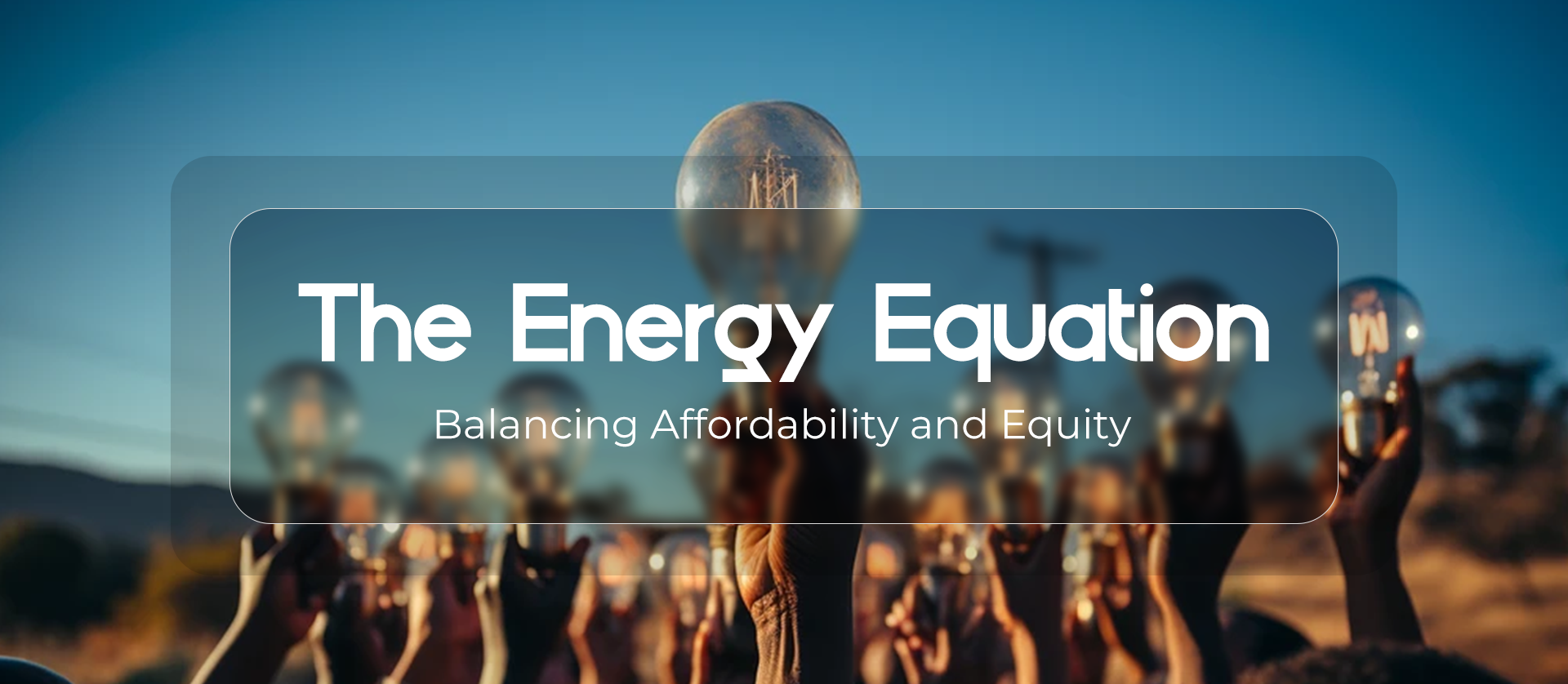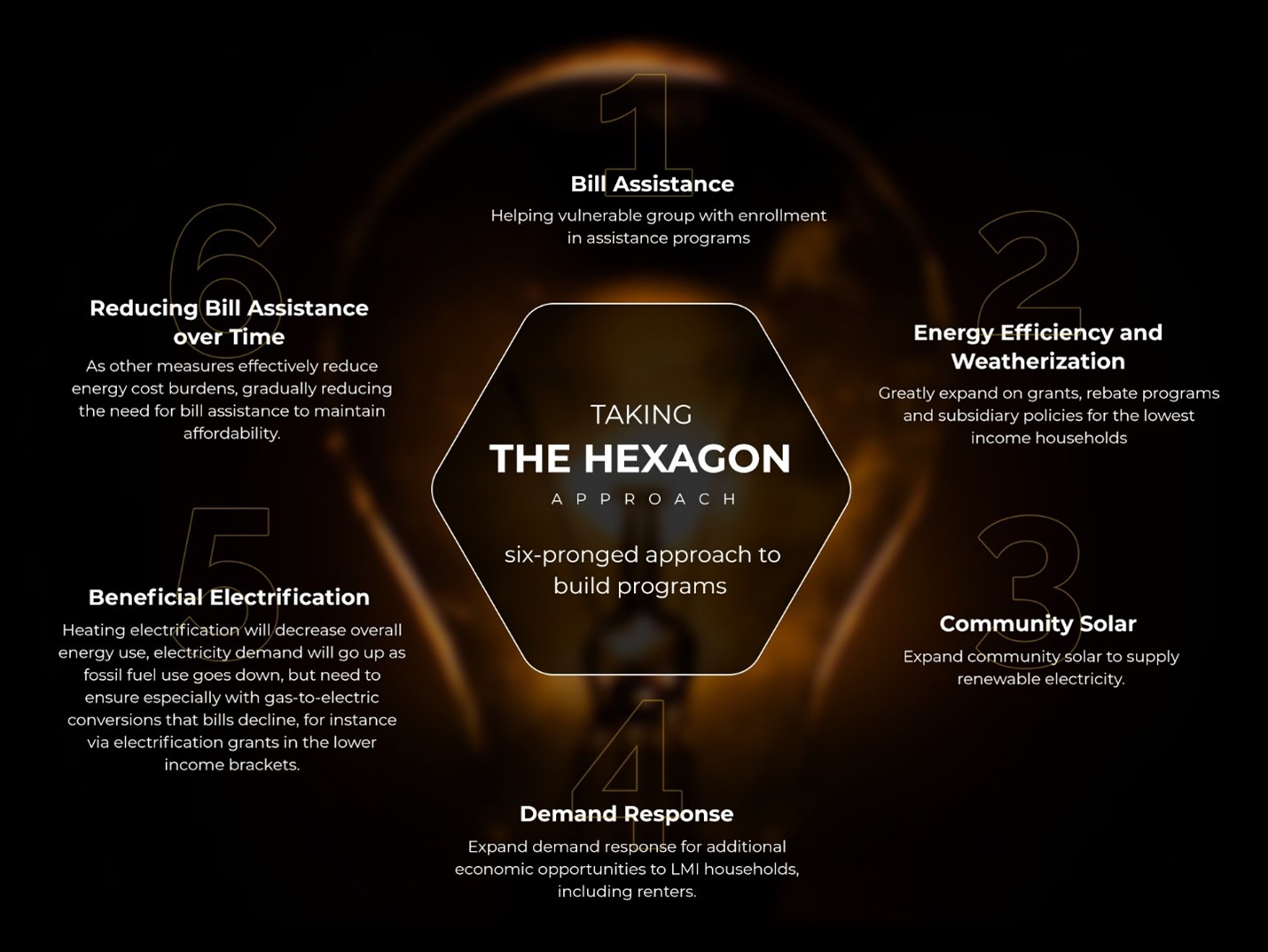The Energy Equation:
Balancing Affordability and Equity

In the book Poverty by America, author Matthew Desmond noted: “Between 2000 and 2022, in the average American city the cost of fuel and utilities increased by 115 percent. The American poor, living as they do in the epicenter of global capitalism, have access to cheap, mass-produced goods like every American does. But what good is a toaster oven if you can’t afford the electricity to power it ….”
Well, today we are in the “Decade 2020”, where energy is more than just a necessity. It’s a powerhouse - essential for warmth, comfort, and connectivity – 24*7. A digitally promising decade where every innovation, every connection can happen only when there is a source available 24*7.
Yet it's heartbreaking to imagine a day lived by billions of people facing no water no electricity. A group of segments facing this harsh reality of choosing between paying their utility bills or putting food on the table. And this is what is called affordability.
As on one side, we embark on the journey towards sustainability and resilience in our energy systems, it's imperative that we approach the challenge of affordability and energy equity also with compassion and empathy.
Current projections show that by 2030, nearly 660 million people will continue to live without electricity and 1.9 billion without clean cooking fuels. As a result, many households face what’s called an energy burden—the percentage of household income spent on energy. In fact, a recent energy efficient report suggests that more than 60% of low-income households will face a high energy burden, with some paying more than 20% of their income on utility bills.
IT’S HARSH BUT TRUE
Well, what we believe is that energy is a fundamental need for individuals and communities, powering homes, businesses, and essential services. However, ensuring equitable access to energy remains a significant challenge, particularly for vulnerable and low-income populations. Energy costs are a disproportionate burden on lower-income families, with households across the country struggling to pay their bills.
As we strive for sustainability and resilience in our energy systems, addressing affordability and promoting energy equity are critical components of building a more inclusive and just society.
But let’s understand the basic fundamentals first-
What is Affordability and Energy Equity? What are it’s related opportunities, challenges and obligations?
Energy affordability and energy equity are separate issues, but they often intersect when decisions are being made about deploying funding for new programs and infrastructure. Affordability is generally well understood; equity is not.
Energy equity aims to minimize the negative impacts of our energy systems and maximize the benefits for everyone — especially disadvantaged and historically underserved communities. Historically, these impacts and benefits haven’t been equitably distributed.
The opportunity is to put the significant federal resources earmarked for energy affordability and equity to work effectively for vulnerable populations.

Well, this being a solution, it’s also a challenge.
While policy makers, regulators and utility stake holders are the ones who will initiate such programs and policies, but it’s technology through which it will reach the masses.
Programs alone doesn’t solve problems.
While launching energy efficient programs is important, and required, but insufficient on its own. Instead of creating and marketing new programs that address piecemeal problems for low and moderate income customers, and which typically have low adoption rates, we need a new approach. We need fresh ideas to operationalize the effective allocation and deployment of potentially game-changing resources.
We also need to remain vigilant in advocating for at-risk populations and develop better processes for effectively and responsibly deploying these funds.
Curating Better processes for better outcomes
Becoming more deliberate in our approach to solving affordability and equity challenges requires a different customer-centric mindset. We should be asking how we can make it easier for customers to access these programs. By taking a step back, we can develop more effective processes that have both immediate and long-term impact.
There is no more status quo: the problems are big, the challenges are momentous, and we need new, creative solutions.
Bridging the Digital Gap with Vertical Specific AI Powered Connected Experience Platform
AI/ ML powered digital self-serve customer experience platform
Weave equity and affordability into utility’s business model.
One Step at a time:
- Strategies for Promoting Affordability and Energy Equity:
- Enhancing Access to Assistance Programs: Streamlining enrollment processes and increasing awareness of available assistance programs.
- Investing in Energy Efficiency: Improving energy efficiency of buildings and appliances to reduce energy costs, particularly for low-income households.
- Expanding Renewable Energy Access: Investing in renewable energy infrastructure and community solar projects to provide affordable and clean energy solutions.
- Empowering Community Engagement: Engaging communities in decision-making processes and prioritizing community-led initiatives to meet specific needs.
- Addressing Systemic Inequities: Recognizing and addressing systemic inequities in energy policy, regulation, and investment to achieve long-term energy equity goals.
- Access to Assistance Programs and Flexible Payment Options:
- Online Bill Viewing and Payment: Customers can easily view and pay their bills online, avoiding late fees and penalties.
- 24/7 Customer Service: Access to round-the-clock customer service for assistance with any issues or inquiries.
- Real-Time Utility Usage Tracking: Customers can track their utility usage in real-time, enabling better budgeting and conservation efforts.
- Custom Payment Arrangements: Assistance with setting up custom payment arrangements to accommodate varying financial situations.
- Real-Time Alerts and Notifications: Receive real-time alerts and notifications on high usage via preferred communication channels.
- Access to Rebates and Incentives: Customers can access rebates and incentives through a self-serve platform.
If we addressed the “red tape” problem alone, making it easier and less cumbersome to access the assistance utilities already offer — and simplify and automate the application process for these programs — we could make a huge dent in the process problems that currently limit access to benefits.
What’s in for the Utilities?
Time for NOW
Digital Business Experience Platform for Energy and Water Providers
- Identify and Assist Low-Income Households Digitally:
- Utilize digital platforms and tools to identify households in need of assistance with their energy bills.
- Implement targeted outreach campaigns through digital channels to reach low-income households.
- Offer digital resources and support to help households understand their energy usage and billing patterns.
- Craft Personalized Low-Income Assistance Programs and Rebates:
- Develop tailored assistance programs and rebates specifically designed for low-income households.
- Ensure strict adherence to regulatory compliance guidelines while crafting these programs to protect the rights and interests of beneficiaries.
- Collaborate with government agencies and organizations to fulfill energy pledges and commitments made to low-income households.
- Digitally Engage Low-Income Applicants and Streamline Processes:
- Digitize the application and reimbursement process to reduce paperwork and streamline the overall lifecycle.
- Provide online platforms and tools for low-income applicants to easily apply for assistance programs and track their progress.
- Offer digital assistance and support to guide applicants through the application process and address any questions or concerns they may have.
- Precise Application Processing and Eligibility Determination:
- Implement efficient and accurate processes for processing applications and determining eligibility for assistance programs.
- Ensure that applications are reviewed with compassion and care, taking into account the individual circumstances of each applicant.
- Use technology and data analytics to streamline eligibility determination and reduce processing times.
- Leverage Real-Time Participation Data for Optimization:
- Collect and analyze real-time participation data to gain insights into program effectiveness and areas for improvement.
- Use data-driven insights to optimize program delivery, increase enrollment rates, and enhance the overall impact of assistance initiatives.
- Continuously monitor and evaluate program performance to identify opportunities for refinement and enhancement.
- Proactively Communicate and Educate on Energy Savings:
- Provide proactive communication and education to low-income households on strategies to increase energy savings and reduce utility costs.
- Offer digital resources, tips, and tools to help households implement energy-efficient practices and behaviors.
- Engage with community organizations and stakeholders to disseminate information and promote awareness of energy-saving opportunities.
By proactively identifying their low-income customers and targeting programs with a customer-centric approach, utilities can not only serve their most challenged customers, but also mitigate the financial impacts during the long-term post-crisis recovery phase.
At SEW our job is to help providers understand how their decisions affect the affordability of services and impact the most vulnerable.
Take the Citizen Centric Approach and build yourself the opportunity to become the trusted partners for the lower-income consumers.
Moving Forward:
In our pursuit of a sustainable and fair energy future, prioritizing affordability and energy equity in our policies, programs, and investments is paramount. By centering the needs of vulnerable communities and promoting inclusive decision-making processes, we can forge a more resilient and equitable energy system that benefits all members of society.
At SEW, we advocate for enhancing energy efficiency as a fundamental strategy to empower households to permanently lower energy costs. We are dedicated to ensuring that those who need it most have access to the benefits of efficiency while making opportunities in the efficiency sector accessible to diverse communities.
Time to Move NOW!





